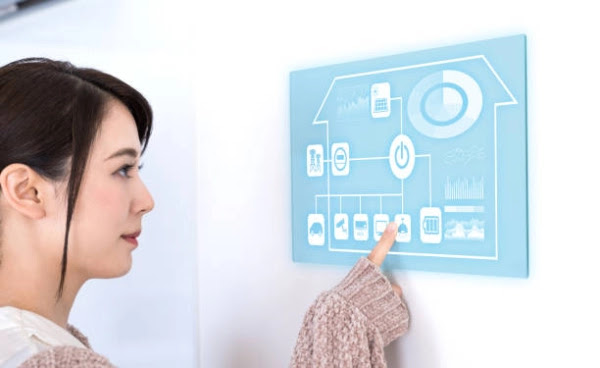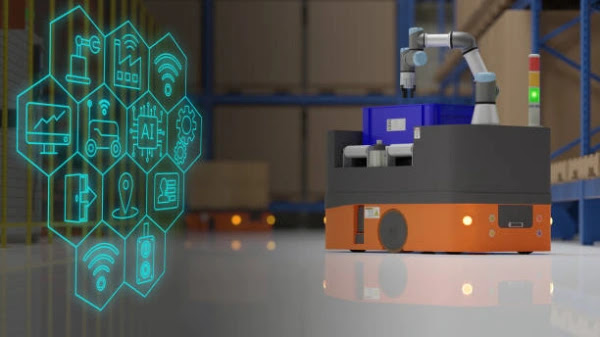Featured
- Get link
- X
- Other Apps
Smart Sensing Technologies
Environmental Monitoring
Introduction
Environmental monitoring plays a crucial role in
understanding and mitigating the impact of human activities on the natural
world. Smart sensing technologies offer innovative solutions to monitor
environmental parameters in real-time, providing valuable insights for
decision-making, policy formulation, and environmental management. This article
explores the principles of smart sensing technologies, their applications in
environmental monitoring, and the benefits they bring to conservation efforts
and sustainable development.
Understanding Smart Sensing Technologies:
Smart sensing technologies refer to the use of sensors, data
analytics, and connectivity to collect, process, and analyze environmental data
in real-time. These technologies leverage advancements in sensors, wireless
communication, and data analytics to monitor a wide range of environmental
parameters, including air quality, water quality, soil health, and
biodiversity. Key components of smart sensing technologies include:
- Sensors: Smart sensing
technologies rely on a variety of sensors to measure environmental
parameters such as temperature, humidity, pressure, pollutants, and
biological indicators. These sensors can be deployed in stationary
monitoring stations, mobile devices, drones, or satellite platforms to
collect data across different spatial and temporal scales.
- Data analytics: Smart sensing
technologies employ advanced data analytics techniques, including machine
learning, artificial intelligence, and statistical modeling, to analyze
large volumes of environmental data and extract meaningful insights. These
analytics methods enable researchers and decision-makers to identify
trends, patterns, and anomalies in environmental data, predict future
outcomes, and inform evidence-based decision-making.
- Connectivity: Smart sensing
technologies leverage connectivity solutions such as wireless networks,
satellite communications, and the Internet of Things (IoT) to transmit
environmental data in real-time. This connectivity enables seamless data
sharing, remote monitoring, and collaboration among stakeholders, regardless
of geographic location or infrastructure constraints.
Applications of Smart Sensing Technologies in Environmental Monitoring:
Smart sensing technologies have numerous applications in
environmental monitoring across various domains, including air quality
monitoring, water quality monitoring, soil monitoring, and biodiversity
monitoring. Some key applications include:
- Air quality monitoring: Smart
sensing technologies are used to monitor air quality parameters such as
particulate matter (PM), nitrogen dioxide (NO2), sulfur dioxide (SO2),
ozone (O3), and volatile organic compounds (VOCs). These sensors are
deployed in urban areas, industrial facilities, and transportation
corridors to measure pollutant levels, track air quality trends, and
assess the effectiveness of air pollution control measures.
- Water quality monitoring: Smart
sensing technologies enable real-time monitoring of water quality
parameters such as pH, dissolved oxygen (DO), temperature, turbidity, and
nutrient levels in rivers, lakes, and coastal areas. These sensors provide
early warning of water quality degradation, identify sources of pollution,
and inform management strategies to protect water resources and aquatic
ecosystems.
- Soil monitoring: Smart sensing
technologies are used to monitor soil health parameters such as moisture
content, nutrient levels, salinity, and soil compaction. These sensors
help farmers optimize irrigation, fertilization, and soil management
practices to improve crop yields, reduce water and fertilizer usage, and
minimize environmental impact.
- Biodiversity monitoring: Smart
sensing technologies enable monitoring of biodiversity indicators such as
species abundance, distribution, and behavior in terrestrial and aquatic
ecosystems. These sensors use techniques such as acoustic monitoring,
camera traps, and satellite imagery to track wildlife populations, assess
habitat quality, and detect changes in biodiversity over time.
Benefits of Smart Sensing Technologies in Environmental Monitoring:
Smart sensing technologies offer numerous benefits for
environmental monitoring, conservation efforts, and sustainable development,
including:
- Real-time data: Smart sensing
technologies provide real-time data on environmental parameters, enabling
rapid detection of environmental changes, early warning of pollution
incidents, and timely response to emerging threats. This real-time data
facilitates evidence-based decision-making and allows stakeholders to take
proactive measures to protect ecosystems and public health.
- Cost-effectiveness: Smart sensing
technologies offer cost-effective solutions for environmental monitoring
compared to traditional monitoring methods, which often require manual
sampling, laboratory analysis, and time-consuming data processing. By
automating data collection, analysis, and reporting processes, smart
sensing technologies reduce operational costs, increase efficiency, and
enable more frequent and widespread monitoring of environmental
parameters.
- Scalability and flexibility: Smart
sensing technologies are scalable and flexible, allowing monitoring
networks to be deployed and adapted to diverse environmental conditions
and monitoring objectives. These technologies can be easily integrated
with existing monitoring infrastructure, expanded to cover larger
geographic areas, or customized to monitor specific parameters of
interest, depending on the needs of stakeholders.
- Data-driven insights: Smart
sensing technologies generate large volumes of environmental data that can
be analyzed to uncover trends, patterns, and correlations that may not be
apparent through traditional monitoring methods. By applying advanced data
analytics techniques, stakeholders can derive actionable insights from
environmental data, inform policy-making, and prioritize conservation
efforts based on scientific evidence and data-driven assessments.
Challenges and Considerations:
Despite the numerous benefits of smart sensing technologies,
stakeholders must address challenges and considerations to realize their full
potential in environmental monitoring:
- Sensor accuracy and reliability:
Smart sensing technologies rely on sensors to collect environmental data,
which may vary in accuracy, reliability, and calibration. Ensuring the
quality and reliability of sensor data is essential to maintain data
integrity and confidence in monitoring results. Regular calibration,
validation, and quality control procedures are necessary to address sensor
drift, calibration errors, and environmental variability.
- Data integration and interoperability:
Smart sensing technologies generate large volumes of heterogeneous data
that must be integrated, harmonized, and interoperable across different
platforms, systems, and stakeholders. Establishing data standards,
protocols, and interoperability frameworks is essential to enable seamless
data sharing, integration, and collaboration among diverse stakeholders involved
in environmental monitoring.
- Data privacy and security: Smart
sensing technologies raise concerns about data privacy, security, and
confidentiality, particularly when collecting sensitive environmental data
in public or private spaces. Implementing robust data protection measures,
encryption techniques, and access controls is essential to safeguard
sensitive information, prevent unauthorized access, and comply with
privacy regulations and ethical guidelines.
- Capacity building and stakeholder
engagement: Building capacity and fostering collaboration among
stakeholders are essential to ensure the successful deployment and
adoption of smart sensing technologies for environmental monitoring.
Governments, academic institutions, non-profit organizations, and industry
partners must invest in training programs, capacity-building initiatives,
and stakeholder engagement activities to build awareness, skills, and
trust in smart sensing technologies and promote their sustainable use and
adoption.
Conclusion
Smart sensing technologies represent a powerful tool for
environmental monitoring, providing real-time data, cost-effective solutions,
and data-driven insights to inform decision-making, conservation efforts, and
sustainable development. By leveraging advancements in sensors, data analytics,
and connectivity, stakeholders can monitor environmental parameters more
effectively, detect changes in ecosystems, and respond proactively to emerging
threats and challenges. However, addressing challenges such as sensor accuracy,
data integration, privacy, and capacity building is essential to realize the
full potential of smart sensing technologies and ensure their sustainable use
and adoption for environmental monitoring. With collaboration, innovation, and
commitment, smart sensing technologies can help build a more resilient,
sustainable, and healthy planet for current and future generations.
- Get link
- X
- Other Apps


